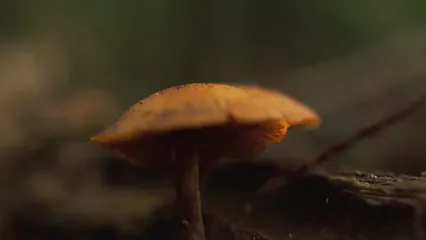Why Are Echinacea Flowers Curling Downward?
Introduction
Echinacea flowers, known for their vibrant blooms, are a favorite in many gardens. However, a common concern is the curling of their petals. This article will discuss the reasons behind this curling, its effects, and potential remedies. Understanding this issue can help maintain the beauty of your Echinacea plants.
Summary and Overview
Echinacea, often called coneflower, includes several species like Echinacea purpurea and Echinacea angustifolia. These hardy perennials thrive in various conditions and are revered for attracting pollinators, too. However, when their flowers curl downward, it can indicate stress or health issues. Recognizing the underlying causes is essential. Curling petals can affect not only the plant’s health but also its visual appeal. This article will address environmental factors, pests, diseases, and effective preventive measures, ensuring your Echinacea remains robust and beautiful.
To learn more about the curling of Echinacea flowers, explore the potential causes and remedies in detail. why are echinacea flowers curling downward during
Environmental Factors
Sunlight Exposure
Sunlight plays a crucial role in the growth of Echinacea flowers. Too much direct sunlight can scorch the petals, causing them to curl downward. On the flip side, insufficient sunlight can lead to weak, leggy growth. Ideally, Echinacea should receive full sun for at least six hours daily. This balance promotes healthy blooms and prevents curling.

When planting, consider the location carefully. Areas with intense afternoon sun might require some shade protection during peak heat. Observing your plants’ reactions can guide adjustments to their light exposure, ensuring optimal growth conditions. Regularly check for signs of distress, such as wilting or curling petals, as these may indicate a need to modify their environment. Keeping these factors in mind will help your Echinacea flourish and maintain its stunning appearance.
Watering Practices
Echinacea flowers thrive on the right amount of water. Overwatering can suffocate roots, leading to curled petals. Signs include wilting and yellowing leaves. On the other hand, underwatering causes stress, making petals curl downward. The key is to maintain a balance.

How can you achieve this? Start by checking the soil moisture regularly. Stick your finger about an inch into the soil. If it feels dry, it’s time to water. Water deeply, but less frequently, ensuring that the soil drains well. This encourages strong root growth and prevents moisture retention issues.
Remember, the frequency of watering depends on the weather and your soil type. Adjust accordingly for hot days or rainy periods. A good drainage system is crucial for keeping your Echinacea healthy and happy.
If you want to take your watering game to the next level, check out this stylish watering can. It’s not just practical; it adds a touch of charm to your gardening routine!
Soil Conditions
Echinacea prefers well-draining, loamy soil with a neutral pH. Poor soil conditions can lead to curling petals. Compacted or clay-heavy soils retain too much moisture, which can suffocate roots. Signs of poor soil include stunted growth and yellowing leaves.

To enhance soil quality, consider adding organic matter like compost. This improves aeration and nutrient levels. You can also test the soil to determine its pH. If it’s too acidic, add lime; if too alkaline, sulfur can help adjust it.
Don’t forget to mix in amendments to boost nutrient availability. A healthy soil foundation supports robust Echinacea plants, reducing the risk of curling petals. Ensuring your flowers have the right soil can lead to a vibrant and thriving garden.
Speaking of soil quality, if you’re serious about gardening, a soil pH test kit is a must-have. It helps you understand your soil’s health and keep your Echinacea thriving!
Disease Considerations
Aster Yellows
Aster yellows is a serious plant disease affecting Echinacea. It’s caused by a phytoplasma, a type of bacteria that infects the plant’s vascular system. Symptoms include curled, yellowing leaves and distorted flowers. Infected plants may display stunted growth and malformed flower heads.

This disease primarily spreads through leafhoppers, small insects that feed on infected plants. Once they feed on healthy plants, they transmit the disease. Managing aster yellows requires swift action. The best approach is to remove and destroy any infected plants. This prevents the disease from spreading further in your garden.
To reduce the risk of infection, keep your garden free of weeds that may harbor leafhoppers. You can also plant resistant varieties to safeguard your Echinacea. Regular monitoring helps catch symptoms early. Pay attention to any unusual changes, as early intervention is key to managing this disease effectively.
Fungal Infections
Fungal diseases can also affect Echinacea, leading to symptoms like leaf spots and powdery mildew. Powdery mildew appears as a white, powdery coating on leaves and stems, while leaf spots show as brown or black lesions. Both can weaken plants and lead to curling flowers.

To treat these conditions, start with cultural practices. Ensure good air circulation around your plants by spacing them properly. This reduces humidity levels that fungi thrive in. Water at the base of the plants to keep leaves dry, as wet foliage encourages fungal growth.
If infections persist, consider using fungicides. Organic options like neem oil can be effective against powdery mildew. Always follow the manufacturer’s instructions when applying treatments. Regularly inspect your Echinacea for early signs of these diseases. Catching issues early can prevent more extensive damage and keep your garden thriving.
Seasonal Changes
Impact of Seasons on Echinacea
Echinacea flowers, like many plants, respond significantly to seasonal changes. In spring, they burst into life, showcasing vibrant blooms. However, as temperatures rise during summer, the heat can stress these plants. This stress often manifests as curling petals.

In fall, Echinacea transitions into dormancy. During this period, growth slows, and flowers may appear less robust. Dormancy is vital for the plant’s lifecycle. It allows the roots to conserve energy for future growth. Understanding dormancy cycles can help you appreciate why flowers may curl at different times.
Flowering periods also impact how Echinacea appears. In ideal conditions, they bloom from late spring until early fall. But fluctuations in temperature and moisture can disrupt this. If summer becomes excessively hot or dry, curling can occur as the plant struggles to survive. Regular monitoring during these times is essential.
By recognizing seasonal growth patterns, you can anticipate changes in your Echinacea plants. Adjusting care based on these patterns can enhance their health and beauty. Remember, the goal is to support your Echinacea through all seasons, ensuring they thrive year after year.
Best Practices for Echinacea Care
Regular Monitoring
Regular plant inspections are vital for Echinacea health. By keeping an eye on your flowers, you can catch potential problems early. Look for signs of distress, such as curling leaves or discoloration.

Monitoring techniques are straightforward. Check your plants weekly, especially during hot months. Pay attention to soil moisture and overall plant vigor. If you notice any changes, investigate further. Early detection can prevent minor issues from becoming severe.
Engaging in regular monitoring not only helps maintain plant health but also deepens your gardening experience. You’ll become more attuned to your plants’ needs, leading to a more flourishing garden.
While you’re at it, consider keeping a gardening journal. Documenting your observations can help you learn what works best for your Echinacea over time!
Maintenance Tips
Keeping your Echinacea healthy requires consistent maintenance. Start with deadheading, which involves removing spent flowers. This encourages new blooms and keeps your garden looking fresh.

Soil care is equally important. Echinacea thrives in well-draining soil rich in organic matter. Consider adding organic compost annually to boost nutrient levels. Test the soil pH regularly to ensure it remains neutral.
Watering practices also play a crucial role. Echinacea prefers deep, infrequent watering. This encourages strong root development. Check soil moisture before watering to avoid over or underwatering.
Lastly, consider companion planting. Pairing Echinacea with other perennials can enhance your garden’s diversity and resilience. This approach creates a vibrant ecosystem, supporting pollinators and beneficial insects.
By adopting these gardening techniques, you’ll cultivate healthy Echinacea plants. Your efforts will reward you with stunning blooms and a thriving garden.
Conclusion
Echinacea flowers curling downward can signal various issues. Environmental stress, pests, and diseases often contribute to this problem. Proper care is crucial to prevent these curling petals. Regular monitoring ensures that any changes are caught early, allowing for timely intervention. Keeping an eye on watering practices, sunlight exposure, and soil conditions will help maintain plant health and beauty. If you notice curling, take proactive steps to address the issue. Your efforts will lead to a thriving garden filled with stunning Echinacea blooms.
FAQs
What causes Echinacea flowers to curl downwards?
Echinacea flowers may curl due to environmental stress, pests, or diseases. Factors like excessive water or sunlight can also play a role.
How can I prevent my Echinacea flowers from curling?
To prevent curling, ensure proper watering—avoid both overwatering and underwatering. Provide adequate sunlight and inspect for pests regularly.
Are curling Echinacea flowers a sign of disease?
Yes, curling can indicate diseases like Aster yellows. This disease causes distorted foliage and stunted growth, often requiring the removal of infected plants.
What should I do if my Echinacea plants are infested with pests?
If pests are present, act quickly. Remove affected parts and use organic insecticides like neem oil. Regular inspections can help catch infestations early.
How often should I water my Echinacea plants?
Water Echinacea when the top inch of soil feels dry. Generally, they prefer deep watering once a week, adjusting based on weather and soil type.
Also, if you’re interested in helping pollinators, consider planting an excellent pollinator garden book. It’s a great resource for anyone looking to create a butterfly haven!
Please let us know what you think about our content by leaving a comment down below!
Thank you for reading till here 🙂
All images from Pexels




